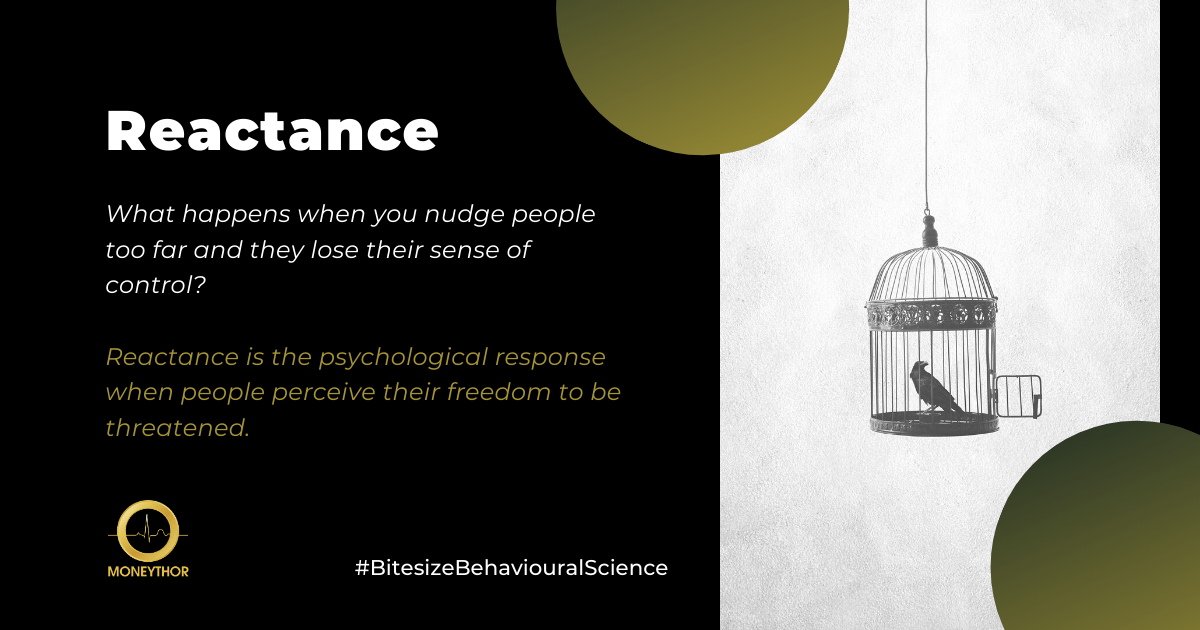What happens when you nudge people too far and they lose a sense of control? Reactance.
What is reactance?
Reactance is the psychological response of people when they perceive their freedom to be threatened. What this means is that people can suffer an emotional response such as stress or anger whenever they feel they are no longer in control of their decisions.
Throughout the last year we have seen widespread reactance as people struggle with new COVID-19 related protocols and regulations. A sense of loss of control over one’s life has pushed people to act out against the instructions they have been given such as avoiding contact with other people and wearing masks.
In the business world and more specifically financial services, reactance is a common theme. Being persuaded to buy something, being forced to pay a fee or being prohibited from carrying out a transaction are examples of situations where reactance can occur. When these situations arise, we are motivated to regain control and do the exact opposite of what is being asked.
Why does reactance happen?
It can happen for a number of reasons including lack of trust in the provider of the instructions or lack of clarity around what is being asked of people.
How can brands avoid reactance?
- Be careful with tone & voice
Persuasive, controlling and forceful language, using terms such as should, must and need can lead to a negative reaction from people where they feel their freedom is under threat. Use non-controlling language such as can or could. Use humour and stories to reduce feelings of reactance.
- Don’t overuse behavioural science concepts
Certain behavioural concepts such as scarcity and defaults can trigger reactance. Scarcity when overused can create a disconcerting sense of urgency and defaults can generate feelings of being forced to select an option.
Behavioural science concepts are a helpful tool for helping customers to make rational decisions, however when overused can prompt reactance.
- Certainty is key
Provide customers with outcomes and details of what will happen if they follow the desired behaviour. Being clear on what will happen will create a sense of comfort and give customers a sense of control over the situation.
- Give customers a feeling of choice
When customers feel like they have a choice it can increase their sense of freedom and reduce reactance. Use feedback loops to give customers the control over the type of nudges and content they see and how often they see it.
- Reframe losses as gains
When customers fear that they will lose something, reactance is more likely to occur. Focus on communicating the positive impact of the change. For example, instead of saying “If you don’t start saving today you won’t have enough money for retirement” reframe it to “Start saving today and set yourself up well for retirement.”
- Reactance & reverse psychology
Interestingly in some instances reactance can be used as a motivational tool. Reactance can be used to stimulate a response from customers. For example, if a person is told they cannot achieve something, they can feel that their freedom is being threatened and motivate them to challenge what they have been told and work towards success.
Reactance is a common feeling amongst people who often feel like their freedom is threatened. Reactance can produce both undesirable and desirable outcomes. It is important for brands to consider how reactance plays a role in their customers’ response to nudges and other marketing materials.

